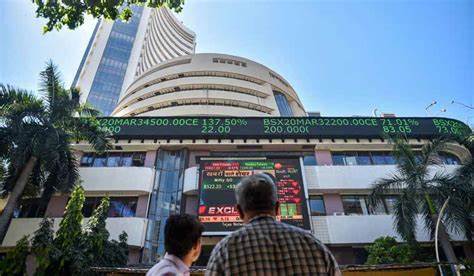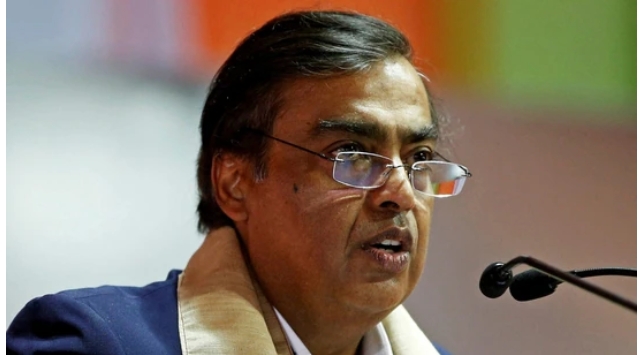Indian stock market reaches $5 trillion landmark ahead of general election results
The Indian stock market
on Tuesday reached a landmark after it surged to a market capitalisation of $5 trillion for the first time ever.
The Indian stock market created a wealth of $1 trillion in just 6 months to join the exclusive $5 trillion club and defied the FII pullout before the Lok Sabha election results on June 4.
The combined market capitalisation of all listed stocks on BSE on Tuesday rose up to Rs 414.75 lakh crore ($5 trillion) during the day as investors continued to buy stocks in the broader market while Nifty and Sensex were struggling for direction following last week’s rally.
Dalal Street’s journey from $4 trillion on 29 November 2023 to $5 trillion on May 21 took less than six months.
Nifty is now about 250 points away from its all-time high while mid and small-cap indices touched new peaks in Tuesday’s session.
Nse link here httpse://www.bing.com/ck/a?!&&p=336893c00fbe686eJmltdHM9MTcxNjI0OTYwMCZpZ3VpZD0xNzBjNDk4NC1jZGE4LTZjOGUtMDYyMy01YTA3Y2NhZTZkYjMmaW5zaWQ9NTQ3Ng&ptn=3&ver=2&hsh=3&fclid=170c4984-cda8-6c8e-0623-5a07ccae6db3&psq=nseindia&u=a1aHR0cHM6Ly93d3cubnNlaW5kaWEuY29tLw&ntb=1
DII EFFECT
This leg of the bull run is being driven by domestic institutional, retail, and HNI investors, even as FIIs have pulled out at least Rs 28,000 corer this month.
India is the fifth-largest stock market, behind only Hong Kong, Japan, China, and the US.
India hit $1 trillion for the first time on 28 May 2007. It took the stock market another 10 years to reach the next trillion. The $2 trillion milestone came on 16 May 2017. The next one was quicker as the $3 trillion level was hit in four years on 24 May 2021.kuckad news.com
While the market has gone through volatile period in the last few weeks amid election-related speculations, investors have found comfort in comments made by Prime Minister Narendra Modi and Home Minister Amit Shah.
“You will see that in one week within June 4, the day election results would be declared, market participants would get tired,” said PM Modi in an interview with NDTV.
A few days ago, Amit Shah also told investors to buy the dip as the market will go up after the election results.
India is expected to become the third-largest economy by 2027, and the market cap is expected to reach $10 trillion by 2030, assuming market returns in line with the last 15-20 years’ history and new listings.
While India remains the favourite of many emerging market investors globally, the increasing size of the market will make it impossible for large investors to ignore and also provide enough liquidity for big players.
the market depth in India has also increased considerably over the last few years with the number of stocks with $1 billion market cap nearly doubling to 500.
India is also among the markets across major EM economies, which have consistently given greater than 10% annualised returns over the last 5-year/10-year/15-year/20-year periods.
In the MSCI Emerging Markets (EM) index, India’s weightage is set to increase from 18.3% to closer to 19% from May 31, leading to possible FII inflows worth about $2.5 billion.
“Over the next four years, India’s GDP will likely touch $5 trillion, making it the third-largest economy by 2027, overtaking Japan and Germany, being the fastest-growing large economy with the tailwinds of demographics (consistent labour supply), improving institutional strength, and improvement in governance,” said Jefferies.






